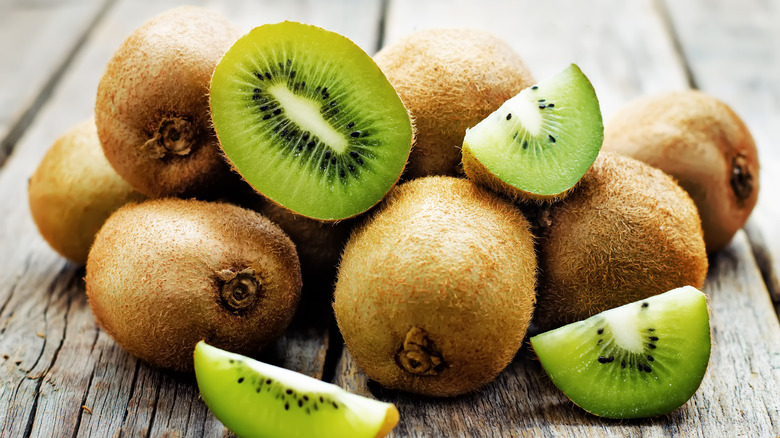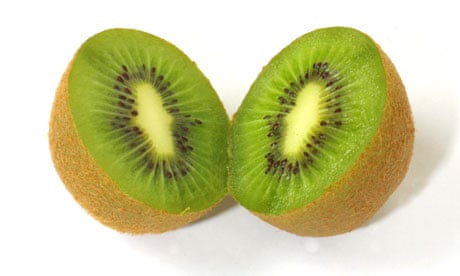Kiwis Unmasked: What Do Kiwis Taste Like and A lot more
Wiki Article
Discovering the Distinct Characteristics and Fascinating Biology of Kiwi: A Comprehensive Study
Welcome to the interesting world of kiwi! In this thorough research study, we will certainly take you on a trip to explore the distinct features and biology of these interesting birds. From their physical features to their feeding practices and reproductive actions, we will certainly explore every element of their lives. Prepare to be impressed as we uncover how kiwis have actually adjusted to their flightless presence and discover their eco-friendly value. Prepare to dive deep into the captivating globe of kiwi!Physical Features
What are the physical characteristics of a kiwi bird? Well, allow's dive right in! The kiwi bird is a little, flightless bird indigenous to New Zealand. It gauges concerning 12 to 14 inches in elevation and considers around 2 to 7 pounds. One of one of the most distinct attributes of the kiwi bird is its long, slim costs. This expense is not only used for feeding, but also for digging burrows in the ground.The kiwi bird has a distinct plumage, with soft, hair-like plumes that look like fur. Unlike the majority of birds, the kiwi has small wings that are concealed underneath its feathers and are not functional for flying.
One more interesting physical quality of the kiwi bird is its nostrils situated at the pointer of its expense. This adaptation enables them to sniff out worms and insects, their main resource of food, in the fallen leave trash on the woodland floor (what do kiwis taste like). Furthermore, the kiwi bird has large, round eyes that are adjusted for low-light conditions, as they are largely nighttime
Feeding Practices
To understand the feeding behaviors of the kiwi bird, you require to observe its foraging behavior and dietary choices. Kiwis are special in their feeding practices, as they are mostly nighttime and count heavily on their sense of scent to locate food. They have a long, slim costs that enables them to probe the ground trying to find bugs, worms, and other invertebrates. These birds utilize their strong feeling of scent to discover victim hidden beneath the surface, and after that utilize their bill to remove it.In enhancement to insects, kiwis additionally take in seeds, fruits, and berries. Kiwis have actually been observed feeding on a large variety of plant species, suggesting their flexibility to various food resources.
Interestingly, kiwis do not have a crop, which is a specialized component of the gastrointestinal system discovered in several birds. Rather, their food passes straight from the esophagus to the stomach. This might be a result of their special evolutionary history and eco-friendly specific niche.
Reproduction and Breeding
Currently allow's look into the fascinating world of kiwi reproduction and reproduction, structure upon our previous expedition of their distinct feeding routines. Kiwis have a rather fascinating reproductive procedure. They are monogamous birds, implying they create long-term pairs. As soon as a set has developed, they will continue to be together for life, which can be approximately three decades in the wild.Reproducing period for kiwis usually occurs between June and March. Throughout this time, the women kiwi will lay one to 2 eggs, which are abnormally big contrasted to the bird's body dimension. Actually, kiwi eggs are the biggest of any bird symmetrical to body weight. After the eggs are laid, both the man and women take turns incubating the eggs, with each taking shifts that can last up to 12 days.
When the chicks hatch, they are born totally feathery and able to see (what do kiwis taste like). They are additionally quite bright, suggesting they are able to deal with themselves reasonably rapidly. Also after the chicks have actually hatched, the parents proceed to give treatment and defense for them until they are fully independent, which can take numerous months.

Adaptations to Flightless Existence
During their evolutionary background, kiwis have actually established impressive adaptations for their flightless existence. As a flightless bird, the kiwi has undergone a number of adjustments to its composition and behavior that allow it to prosper in its unique setting. One of one of the most visible adaptations is image source its wing structure. Unlike various other birds, kiwis have little, vestigial wings that are virtually ineffective for flying. Rather, these wings have developed into effective appendages that aid in balance and security, allowing the kiwi to navigate its forest flooring habitat with convenience.One more adjustment that kiwis have actually developed is their strong legs and feet. These features enable them to successfully walk and run, making up for their failure to fly. The kiwi's legs are positioned and muscle much back on its body, providing it with a low center of mass and ideal balance. Additionally, its feet are geared up with sharp claws that help in digging and foraging for food.
In order to survive without the ability to fly, kiwis have also created a keen feeling of smell. Their long, slender beaks home extremely delicate nostrils, allowing them to find bugs and worms under the woodland floor. This impressive adaptation helps kiwis situate food resources and maintain a well balanced diet regimen.
Ecological Value
The ecological value of kiwi hinges on their function as vital seed dispersers in their native environment. As they relocate with the woodland floor, kiwi forage for pests, worms, and a variety of plants. While doing so, they eat berries and fruits, which consist of seeds. These seeds then pass via the kiwi's digestive system unhurt and are later spread via their feces. This one-of-a-kind procedure assists in the all-natural regeneration of forests.The kiwi's ability to disperse seeds is critical for maintaining the biodiversity and equilibrium of their ecosystem. By spreading seeds throughout different locations, they add to the development and wealth of different plant types. In turn, these plants supply this food and sanctuary for various other animals, creating a web of interdependencies within the environment.
Furthermore, kiwi play an essential duty in regulating the populace of certain plant types (what do kiwis taste like). Some plants produce a too much variety of seeds, which can bring about overcrowding and limited sources for other plants. By eating and spreading these seeds, kiwi assistance manage the development of such plants, making sure a much healthier and extra diverse ecosystem
The environmental value of kiwi expands beyond their function as seed dispersers. Their burrowing behavior also contributes to soil aeration and nutrient recycling, boosting the total health of the woodland floor. Additionally, their feeding practices can help manage insect populaces, decreasing the threat of parasite outbreaks that might harm vegetation.
Final Thought
Finally, checking out the distinct characteristics and fascinating biology of kiwi discloses its physical attributes, feeding habits, recreation and reproducing patterns, in addition to its adaptations to a flightless existence. With its unique features and environmental value, the kiwi functions as an amazing example of nature's variety and adjustment. By comprehending and valuing the kiwi's role in its environment, we can further promote preservation initiatives to ensure the conservation of this remarkable species for future generations.
Report this wiki page